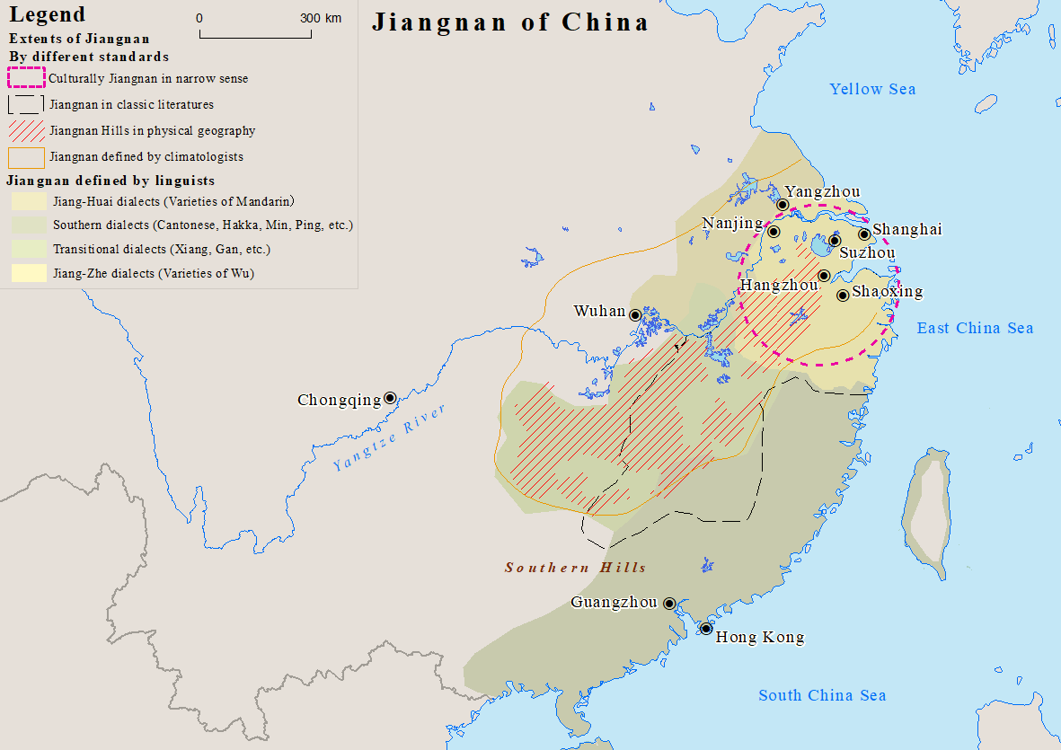|
Chhau-a-koe
''Chhau-a-koe'' is a type of kuih with a sweet dough made with glutinous rice flour, sugar, and a ground cooked paste of Gnaphalium affine, Jersey cudweed or Chinese mugwort. The herbs give the dough and the finished kuih a unique flavor and brownish green color. The kuih is found in Fujian cuisine, Fujian, Hakka cuisine, Hakka, and Taiwanese cuisine. Chhau-a-koe is usually made in Qingming Festival as a celebratory food item. Although the kuih can be made from either herb, Chinese mugwort is more commonly used in making Hakka-style caozaiguo. The herb-flavored dough is commonly filled with ground meat, dried white radish, or sweet bean pastes. In Taiwan, a filling consisting of Dried shrimp, shiitake mushrooms, dried and shredded white radish (), and deep-fried shallots is commonly used. See also * Qingtuan, the Jiangnan form of this dish * Kusamochi, the Japanese form of this dish * Songpyeon, a similar Korean dish References External linksRelated types of Taiwanese Kuih [...More Info...] [...Related Items...] OR: [Wikipedia] [Google] [Baidu] |
Qingtuan
''Qīngtuán'' ( 青糰) or ''Tsingtuan'' is a form of dumpling that is green, originating from Jiangnan but common throughout China. It is made of glutinous rice mixed with Chinese mugwort or barley grass. This is then usually filled with sweet red or black bean paste. The exact technique for making ''qingtuan'' is quite complicated and the grass involved is only edible in the early spring, so it is typically only available around the time of the Qingming Festival , with which the dumpling has become associated. Nowadays, Qīngtuán sold in most convenience stores in China are made of glutinous rice mixed with matcha. It also has more diverse fillings, such as rousong or salted egg yolk. Much of the ''qingtuan'' consumed in China is prepared and consumed as street food from local vendors. Origin The tradition of eating qingtuan at Qingming Festival evolved from the ancient Chinese Cold Food Day (one or two days before Qingming Festival). The custom on Cold Food Day is tha ... [...More Info...] [...Related Items...] OR: [Wikipedia] [Google] [Baidu] |
Taiwanese Cuisine
Taiwanese cuisine (, Bopomofo:ㄊㄞˊㄨㄢˉㄌㄧㄠˋㄌㄧˇ, or , Bopomofo:ㄊㄞˊㄨㄢˉㄘㄞˋ) has several variations. The earliest known cuisines of Taiwan are that of the Taiwanese indigenous peoples. Over hundred years of historical development; mainstream Taiwanese cuisine has been influenced by Hakka cuisine, the cuisines of the '' waishengren,'' and Japanese cuisine. Although southern Fujian cuisine has had the most profound impact. History and development Taiwanese culinary history is murky and is intricately tied to patterns of migration and colonization. Local and international Taiwanese cuisine, including its history, is a politically contentious topic. Taiwan's complex and diverse identity makes Taiwanese cuisine hard to communicate. The history of Taiwanese cuisine began with the cuisine of aboriginal peoples on the island of Taiwan, which existed in the ancient times without written records. From the Ming dynasty in 16th century, a large number of im ... [...More Info...] [...Related Items...] OR: [Wikipedia] [Google] [Baidu] |
China
China, officially the People's Republic of China (PRC), is a country in East Asia. It is the world's most populous country, with a population exceeding 1.4 billion, slightly ahead of India. China spans the equivalent of five time zones and borders fourteen countries by land, the most of any country in the world, tied with Russia. Covering an area of approximately , it is the world's third largest country by total land area. The country consists of 22 provinces, five autonomous regions, four municipalities, and two Special Administrative Regions (Hong Kong and Macau). The national capital is Beijing, and the most populous city and financial center is Shanghai. Modern Chinese trace their origins to a cradle of civilization in the fertile basin of the Yellow River in the North China Plain. The semi-legendary Xia dynasty in the 21st century BCE and the well-attested Shang and Zhou dynasties developed a bureaucratic political system to serve hereditary monarchies, or dyna ... [...More Info...] [...Related Items...] OR: [Wikipedia] [Google] [Baidu] |
Radish
The radish (''Raphanus raphanistrum'' subsp. ''sativus'') is an Eating, edible root vegetable of the family Brassicaceae that was domesticated in Asia prior to Roman Empire, Roman times. Radishes are grown and consumed throughout the world, being mostly eaten raw as a crunchy salad vegetable with a pungency, pungent, slightly spicy flavor, varying in intensity depending on its growing environment. There are numerous variety (botany), varieties, varying in size, flavor, color, and length of time they take to mature. Radishes owe their sharp flavor to the various chemical compounds produced by the plants, including glucosinolate, myrosinase, and isothiocyanate. They are sometimes grown as companion plants and suffer from few pests and diseases. They germinate quickly and grow rapidly, common smaller varieties being ready for consumption within a month, while larger ''daikon'' varieties take several months. Being easy to grow and quick to harvest, radishes are often planted by novi ... [...More Info...] [...Related Items...] OR: [Wikipedia] [Google] [Baidu] |
Songpyeon
''Songpyeon'' (, 松䭏) is a traditional Korean food made of rice powder. It is a type of ''tteok'', small rice cakes, traditionally eaten during the Korean autumn harvest festival, Chuseok. It is a popular symbol of traditional Korean culture. The earliest records of songpyeon date from the Goryeo period. Description Songpyeons are half-moon shaped rice cakes that typically contain sweet or semi-sweet fillings, such as soybeans, cowpeas, chestnuts, jujubes, dates, red beans, sesame seeds, or honey. They are steamed over a layer of pine needles, which gives them a distinctive taste and the fragrant smell of fresh pine trees. The name songpyeon comes from the use of pine needles—"song" means pine tree, thus, songpyeon translates to “pine cakes.” Culture Songpyeon is quintessential to Korean families' Chuseok celebrations. Traditionally, songpyeon was made by Korean families using freshly harvested rice and then offered to their ancestors on the morning of Chuseok as ... [...More Info...] [...Related Items...] OR: [Wikipedia] [Google] [Baidu] |
Jiangnan
Jiangnan or Jiang Nan (; formerly romanized Kiang-nan, literally "South of the River" meaning "South of the Yangtze") is a geographic area in China referring to lands immediately to the south of the lower reaches of the Yangtze River, including the southern part of its delta. The region encompasses the city of Shanghai, the southern part of Jiangsu Province, the southeastern part of Anhui Province, the northern part of Jiangxi Province and the northern part of Zhejiang Province. The most important cities in the area include Anqing, Changzhou, Hangzhou, Nanjing, Ningbo, Shaoxing, Suzhou, Wuxi, Wenzhou, and Zhenjiang. Jiangnan has long been regarded as one of the most prosperous regions in China due to its wealth in trade and very high human development. Most people of the region speak Wu Chinese dialects as their native languages. Etymology The word Jiangnan is based on the Chinese name for the Yangtze, ''Cháng Jiāng'', and ''nán'' meaning "south." In the 19th century, ... [...More Info...] [...Related Items...] OR: [Wikipedia] [Google] [Baidu] |
Shallot
The shallot is a botanical variety (a cultivar) of the onion. Until 2010, the (French red) shallot was classified as a separate species, ''Allium ascalonicum''. The taxon was synonymized with ''Allium cepa'' (the common onion) in 2010, as the difference was too small to justify a separate species. As part of the onion genus ''Allium'', its close relatives include garlic, scallions, leeks, chives, and the Chinese onion. Names The name "shallot" comes from Ashkelon, an ancient Canaanite city, where Classical-era Greeks believed shallots originated. The term ''shallot'' is usually applied to the French red shallot (''Allium cepa'' var. ''aggregatum'', or the ''A. cepa'' Aggregatum Group). It is also used for the Persian shallot or ''musir'' (''A. stipitatum'') from the Zagros Mountains in Iran and Iraq, and the French gray shallot ('' Allium oschaninii'') which is also known as ''griselle'' or "true shallot"; it grows wild from Central to Southwest Asia. The name ''shallo ... [...More Info...] [...Related Items...] OR: [Wikipedia] [Google] [Baidu] |
Deep-fried
Deep frying (also referred to as deep fat frying) is a cooking method in which food is submerged in hot fat, traditionally lard but today most commonly oil, as opposed to the shallow oil used in conventional frying done in a frying pan. Normally, a deep fryer or chip pan is used for this; industrially, a pressure fryer or vacuum fryer may be used. Deep frying may also be performed using oil that is heated in a pot. Deep frying is classified as a hot-fat cooking method. Typically, deep frying foods cook quickly: all sides of the food are cooked simultaneously as oil has a high rate of heat conduction. The term "deep frying" and many modern deep-fried foods were not invented until the 19th century, but the practice has been around for millennia. Early records and cookbooks suggest that the practice began in certain European countries before other countries adopted the practice. Deep frying is popular worldwide, with deep-fried foods accounting for a large portion of global calor ... [...More Info...] [...Related Items...] OR: [Wikipedia] [Google] [Baidu] |
Shiitake
The shiitake (alternate form shitake) (; ''Lentinula edodes'') is an edible mushroom native to East Asia, which is now cultivated and consumed around the globe. It is considered a medicinal mushroom in some forms of traditional medicine. Taxonomy and naming The fungus was first described scientifically as ''Agaricus edodes'' by Miles Joseph Berkeley in 1877. It was placed in the genus ''Lentinula'' by David Pegler in 1976. The fungus has acquired an extensive synonymy in its taxonomic history: *''Agaricus edodes'' Berk. (1878) *''Armillaria edodes'' (Berk.) Sacc. (1887) *''Mastoleucomychelloes edodes'' (Berk.) Kuntze (1891) *''Cortinellus edodes'' (Berk.) S.Ito & S.Imai (1938) *''Lentinus edodes'' (Berk.) Singer (1941) *''Collybia shiitake'' J.Schröt. (1886) *''Lepiota shiitake'' (J.Schröt.) Nobuj. Tanaka (1889) *''Cortinellus shiitake'' (J.Schröt.) Henn. (1899) *''Tricholoma shiitake'' (J.Schröt.) Lloyd (1918) *''Lentinus shiitake'' (J.Schröt.) Singer (1936) *''Lentinu ... [...More Info...] [...Related Items...] OR: [Wikipedia] [Google] [Baidu] |
Dried Shrimp
Dried shrimp are shrimp that have been sun-dried and shrunk to a thumbnail size. They are used in many East Asian, Southeast Asian and South Asian cuisines, imparting a unique umami taste. A handful of shrimp is generally used for dishes. The flavors of this ingredient are released when allowed to simmer. Use East Asia In Chinese cuisine, dried shrimp are used quite frequently for their sweet and unique flavor that is very different from fresh shrimp. They have the coveted umami flavor (or so-called "fifth taste"). It is an ingredient in the Cantonese XO sauce. Dried shrimp are also used in Chinese (mostly Cantonese) soups and braised dishes. It is also featured in Cantonese cuisine, particularly in some dim sum dishes such as rolled and rice noodle roll and in ''zongzi''. Despite the literal meaning of the name Chinese name ''xiā mǐ'' ("shrimp rice"), it has nothing to do with rice other than the fact that the shrimp are shrunk to a tiny size similar to grains of rice. ... [...More Info...] [...Related Items...] OR: [Wikipedia] [Google] [Baidu] |
Taiwan
Taiwan, officially the Republic of China (ROC), is a country in East Asia, at the junction of the East and South China Seas in the northwestern Pacific Ocean, with the People's Republic of China (PRC) to the northwest, Japan to the northeast, and the Philippines to the south. The territories controlled by the ROC consist of 168 islands, with a combined area of . The main island of Taiwan, also known as ''Formosa'', has an area of , with mountain ranges dominating the eastern two-thirds and plains in the western third, where its highly urbanised population is concentrated. The capital, Taipei, forms along with New Taipei City and Keelung the largest metropolitan area of Taiwan. Other major cities include Taoyuan, Taichung, Tainan, and Kaohsiung. With around 23.9 million inhabitants, Taiwan is among the most densely populated countries in the world. Taiwan has been settled for at least 25,000 years. Ancestors of Taiwanese indigenous peoples settled the isla ... [...More Info...] [...Related Items...] OR: [Wikipedia] [Google] [Baidu] |

.jpg)


